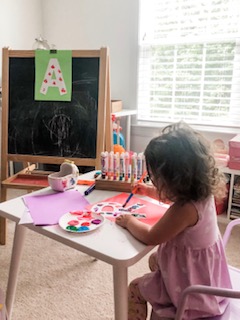
I’d be remiss if I didn’t say I haven’t thought about doing a post like this long before Covid. Before I launched my public insta account and this blog, I would share my “After Nap” activities on my private insta account… and I would get texts and messages pretty frequently asking WHERE to buy something or where I found something from mama friends. Now that a lot of mama friends are making the decision to teach more preschool activities at home because of various reasons for this current school year, I thought it would be the best time to finally write this post!
Before I go on to my most used items for playroom learning activities, I will say I also have a LOT of teacher “junk” from my classroom. I was only a full-time classroom teacher for three years. (I spent two previous years in a few long-term sub positions but in the same school, just in different teachers’ rooms.) My mom is also a retired teacher for over forty years, so yes, she has gifted me with enough stuff to fill a closet and many shelves in my garage! For my little one though, I tend to use the same things over and over, just in new ways, so here we go. Time to get shopping!
And here’s the fun part-let me show you how I’ve used a lot of these materials. You will recognize some from my #makeitmonday insta posts. There are literally TONS of things to do with all of the supplies I listed below, so it’s safe to say, these items will not go wasted in your playroom.
- Contact paper
- Dot stickers
- Food coloring
- Pom Poms
- Sorting bowls
- Water droppers
- Fine motor tools
- Post-it Easel pads
- Mini erasers
- ABC/123 Puzzle
- Washable Paint
- Dot markers
- Laminator
- Laminating sheets (now with two younger siblings, I have justified all that I laminate…#logevity)
- Astro Brights Card stock
- Tongue depressors
- Preschool calendar and weather chart
- Visual Timer (used for so many things from potty training to activity time limits!)
- Vinyl tablecloth…we use and reuse and reuse the same on all the time! It’s been used as a great table covering AND floor covering, depending on the project!
- Paper plates and ziploc baggies are also used a lot in our house!
Contact paper has been a lot of fun for my daughter! I use to hang a piece in our kitchen and give her some paper or shapes to stick while I was cooking dinner. We then went on to using it to color match, sort shapes, and then create patterns. Pom poms, leaves, and buttons are also great things to add in a bin for your child to stick to the paper when you first get started using this as a learning/exploratory tool.
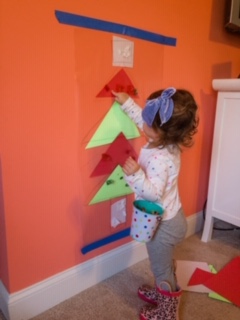
I’ve used both the dot stickers and post-it easel pads SO.MUCH. They are how we first learned our colors, our letters, and how to spell our name/what letters make up our name. The easel pads are great for a lot of different projects because they are sticky at the top. They work really on our easel for art projects and can be stuck on the floor for activities that need lots of space.
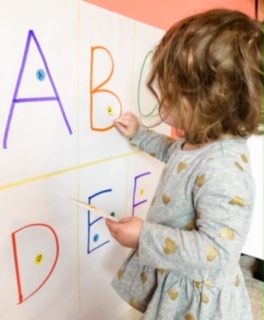

Another fun way we have explored and learned through sensory activities has been through using food coloring! When my daughter was 1.5 we did a lot of water play by making pouring stations, so she could see water in different containers, sizes, and experiment in filling and dumping the water with different tools/objects. Dyeing the water helped her recognize what was happening through her play and experiments. Now that she’s a little older, I have used food coloring for mixing colors: What colors mixed together will make a new color? Let’s see! (that’s not a muddy brown color that is! but hey, muddy brown IS a color!). These water droppers have been SO MUCH FUN.

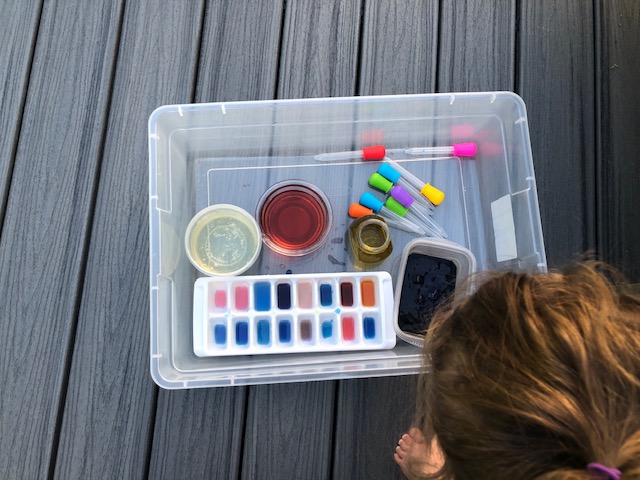
Speaking of sensory play, I have made our fair share of sensory bins…if you’re wondering what exactly a sensory bin is, it’s simple: dump a bunch of stuff (non choking hazard things!) in a bin, and let your child explore, and feel, and dig, and move, and PLAY. The trick (IMO) is just to ensure you have a lot of different textures in there for their little hands to feel and grab. These fine motor tools have been a great part of our sensory bin activities. They allow her to pinch, squeeze, etc…(working on those hand muscles!) which is preparing her for using scissors and learning to write.

When it comes to arts and craft time, don’t under estimate this time as not important! Children need to be able to create and explore arts and craft materials (glue, paint, scissors) in preschool. You don’t want YOUR child to be the one that doesn’t respect the liquid glue bottle and squeezes it everywhere…teach them now what’s acceptable! This is a social skill. They also need this time to express themselves and CREATE. We use this washable paint as well as water color paint during our art time. We paint with different sized brushes, sponge brushes, and even things like q-tips and marshmallows in different ways…we even paint with feet!
Dot markers are also another way to allow them to create in a less messy way and to mix things up…in case you’re also not feeling brave that day, HA!
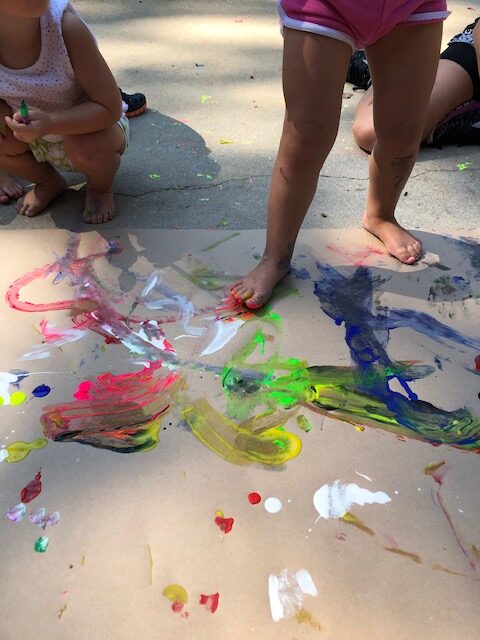
Mini erasers have been used in our house for a few different things. They have been added to sensory bins (for older kiddos!), used for sorting, and used for counting (one-to-one number correspondence). You can buy them in so many themes. We love the animal varieties the best though because there were a few different types of animals, so my daughter could sort them in a few ways.

Tongue depressors and card stock are probably the most overlooked items you should have on hand in your playroom! Keepsake crafts, games, puppets-you name it! We go through a lot of card stock and sticks. My favorite is the Astro Brights card stock– there’s no wimpy colored anything around here! Another good one to mention here is a laminator. I had this laminator while I was teaching, because I made so much for my students and classroom at home. I’ve continued to use it with activities for preschool play for the durability factor and for helping special crafts last longer for her memory book.
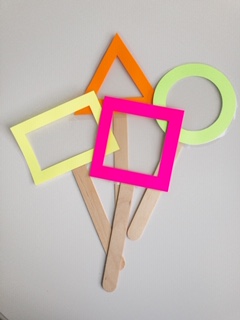
The last thing I’ll mention, and if you’ve been around here for any amount of time, you’ve heard me talk about the importance of a good ABC puzzle. I have found that most leave a negative space that just looks like an “O” for all round letters (D, O, C, Q, etc). This makes it very difficult for kids to differentiate which round letter goes where until they figure out the alphabet sequence (or process of elimination when completing the puzzle!) I love this puzzle. It comes in a two pack, and it can be used in LOTS of ways…even as your child grows, you can use it for basic math operations and making simple c-v-c words (consonant-vowel-consonant) such as c-a-t or d-o-g.

Since my daughter will be home with me this school year, my big purchase recently was this preschool calendar and weather chart. It hasn’t arrived yet, but it will be used to begin our learning time each morning, just as it would if she was in a classroom. I searched for awhile for what I thought was a “good” one and I liked that this one showed the week and calendar in order (not just dates), gave the weather, and also included a section for anything special happening in our week.
What else would you add to this list? I’m sure this post will need a part II… HA!
As an Amazon Associate, I earn from qualifying purchases.

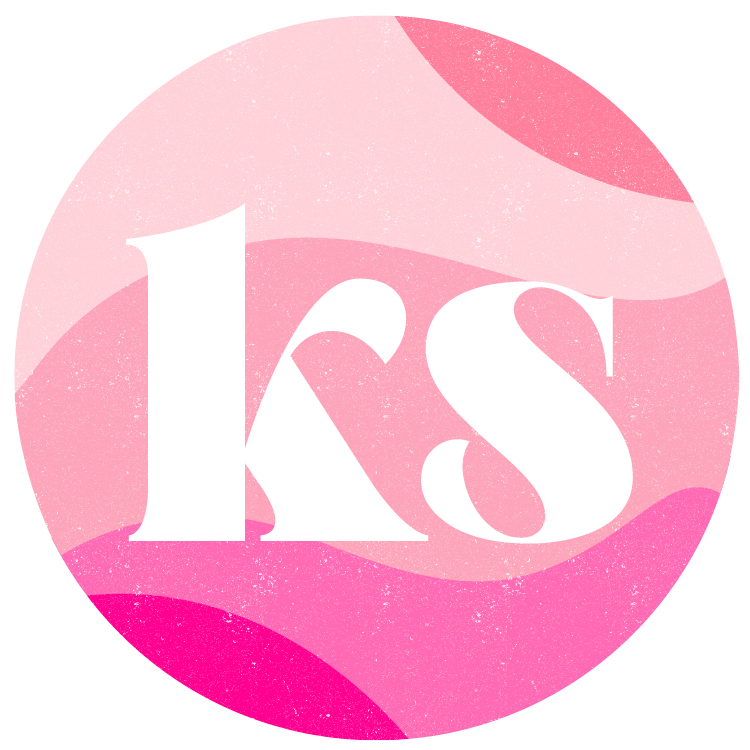

Very nicely done!
Great Post!